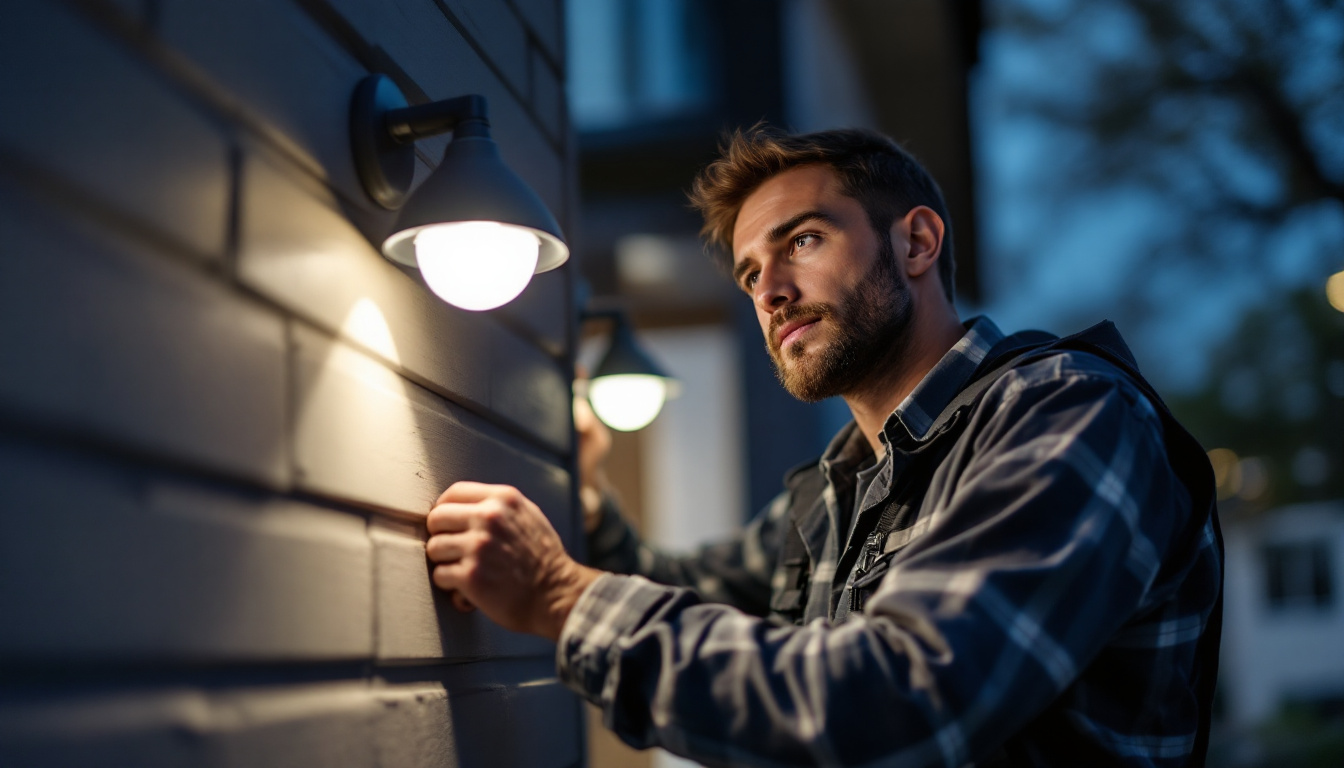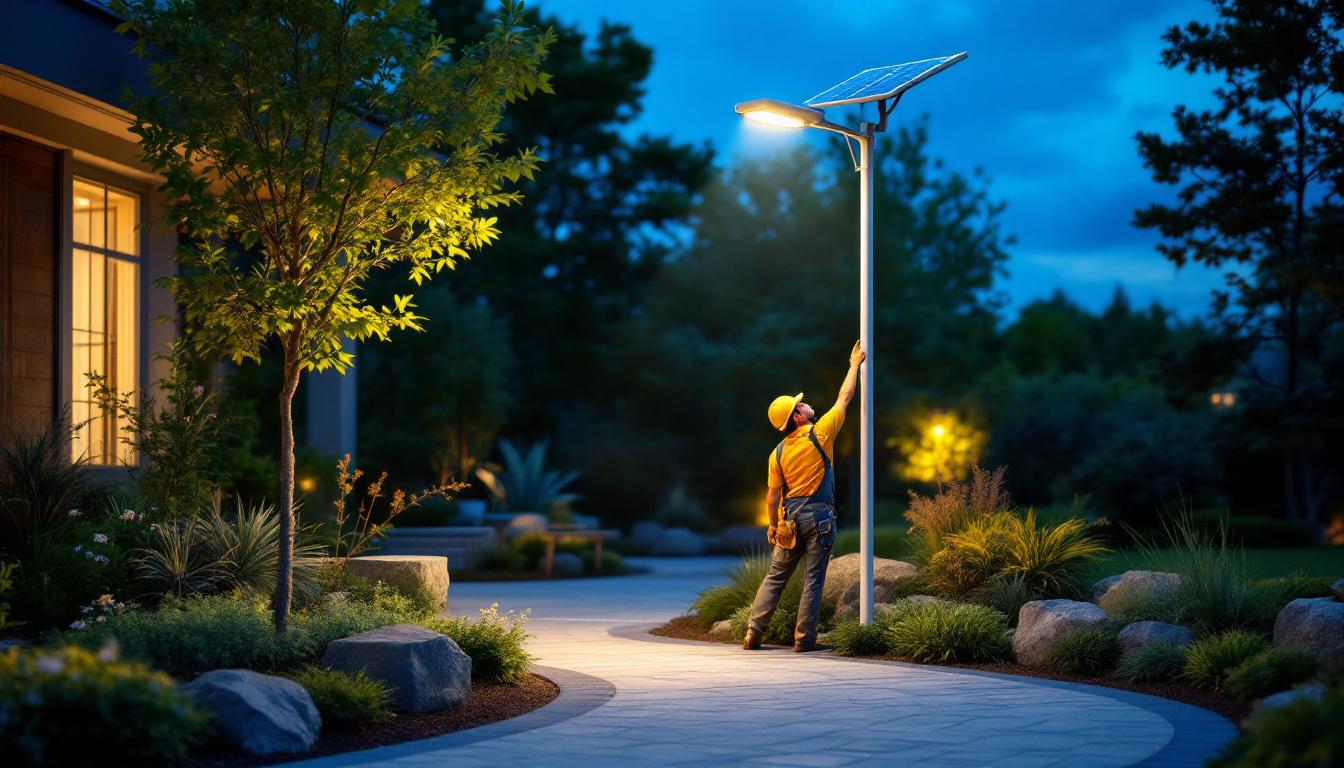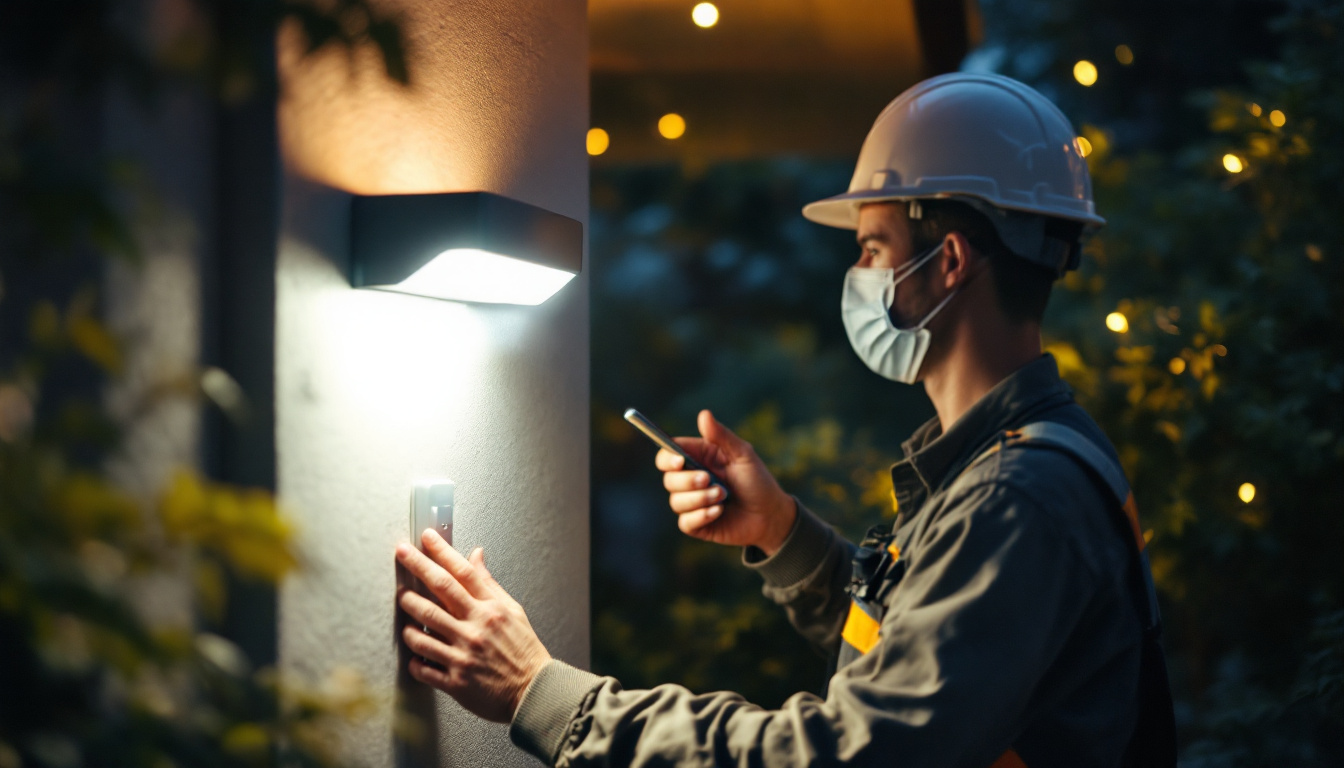
Motion sensored lights have become increasingly popular in both residential and commercial settings. These lighting solutions not only enhance security but also contribute to energy efficiency by ensuring that lights are only activated when needed. For lighting contractors, understanding the compliance requirements related to these systems is essential for successful installation and client satisfaction.
As the demand for smart lighting solutions grows, so does the need for contractors to stay informed about the regulations and standards that govern their use. This article will delve into the compliance aspects of motion sensored lights, providing valuable insights for lighting contractors.
In addition to their security and energy-saving benefits, motion sensored lights can also improve the overall convenience of a space. For instance, in commercial environments such as offices or retail stores, these lights can automatically illuminate pathways, ensuring that employees and customers can navigate safely during low-light hours. Furthermore, in residential settings, homeowners can enjoy the peace of mind that comes with knowing their outdoor areas are well-lit when movement is detected, deterring potential intruders and enhancing the ambiance of their property.
Moreover, advancements in technology have led to the development of more sophisticated motion sensors that can differentiate between human movement and that of pets or passing vehicles. This capability not only minimizes unnecessary activations but also extends the lifespan of the lighting fixtures. As such, lighting contractors must familiarize themselves with the various types of sensors available on the market, including passive infrared (PIR), microwave, and dual-technology sensors, to provide tailored solutions that meet the specific needs of their clients.
Compliance with local, state, and national regulations is crucial for lighting contractors. Failure to adhere to these standards can result in fines, project delays, and potential liability issues. Therefore, it is essential to familiarize oneself with the relevant codes and regulations that pertain to motion sensored lighting systems.
The National Electrical Code (NEC) serves as a foundational guideline for electrical installations in the United States. It outlines safety standards and best practices for electrical systems, including lighting. Contractors must ensure that motion sensored lights are installed following NEC guidelines to avoid safety hazards.
Specific sections of the NEC address the use of occupancy sensors and their installation requirements. For instance, contractors should be aware of the maximum allowable voltage and amperage for these devices, ensuring that they are compatible with the existing electrical infrastructure.
In addition to the NEC, local building codes may impose additional requirements for motion sensored lights. These codes can vary significantly from one jurisdiction to another, so it is critical for contractors to consult local regulations before beginning a project.
Local codes may dictate specific installation practices, such as the placement of sensors, the type of fixtures allowed, and even the energy efficiency standards that must be met. Staying updated on these regulations is essential for ensuring compliance and avoiding costly mistakes.
Energy efficiency is a major consideration in the design and installation of lighting systems. Many regions have adopted energy efficiency standards that impact the use of motion sensored lights. Understanding these standards can help contractors provide clients with solutions that not only meet compliance requirements but also promote sustainability.
In certain states, such as California, Title 24 sets stringent energy efficiency standards for lighting systems. This regulation mandates the use of occupancy sensors in specific applications, such as commercial buildings and high-traffic areas. Contractors working in these regions must ensure that their installations comply with these requirements.
Contractors should also be aware of other state-specific regulations that may influence the selection and installation of motion sensored lights. This knowledge will enable them to offer clients compliant and energy-efficient solutions.
For projects aiming for LEED (Leadership in Energy and Environmental Design) certification, the use of motion sensored lights can contribute to achieving points in the Energy and Atmosphere category. Contractors should understand how these systems can enhance a building’s sustainability profile and help clients meet their green building goals.
Incorporating energy-efficient lighting solutions not only benefits the environment but also appeals to clients who are increasingly conscious of their carbon footprint. By promoting the advantages of motion sensored lights, contractors can position themselves as knowledgeable professionals in the field.
Proper installation of motion sensored lights is crucial for ensuring their effectiveness and compliance with regulations. Lighting contractors should follow best practices to maximize the performance of these systems while minimizing potential issues.
The placement of motion sensors plays a significant role in their effectiveness. Contractors should carefully consider the layout of the space and the intended use of the lighting. For instance, sensors should be positioned to cover high-traffic areas while avoiding obstructions that could impede their functionality.
Additionally, understanding the different types of sensors—such as passive infrared, ultrasonic, and dual technology—can help contractors select the most suitable option for a given application. Each type has its advantages and limitations, and the right choice can enhance the overall performance of the lighting system.
Wiring and connectivity are critical components of motion sensored light installations. Contractors must ensure that the wiring complies with NEC standards and is suitable for the specific type of sensor being used. Proper wiring techniques not only enhance safety but also ensure the longevity of the lighting system.
Furthermore, as smart lighting technology continues to evolve, contractors should be familiar with the integration of motion sensors into broader building automation systems. This knowledge will enable them to offer clients advanced solutions that enhance convenience and energy efficiency.
Regular maintenance and troubleshooting are essential for ensuring the continued effectiveness of motion sensored lights. Contractors should educate clients on the importance of routine checks and provide guidance on how to address common issues.
Routine maintenance involves inspecting motion sensors for dirt, debris, or obstructions that may hinder their performance. Contractors should recommend that clients clean the sensors periodically and check for any physical damage that could affect functionality.
Additionally, testing the sensors to ensure they are responding correctly to motion is crucial. If clients notice that lights are not activating as expected, it may be time to recalibrate or replace the sensors. Educating clients about these maintenance tasks can help prolong the lifespan of the lighting system.
Despite proper installation and maintenance, issues may still arise with motion sensored lights. Common problems include false triggers, lights not turning on, or sensors failing to detect motion. Contractors should be prepared to troubleshoot these issues effectively.
For instance, if a sensor is triggering lights unnecessarily, it may be due to environmental factors such as heat from nearby appliances or moving trees. Adjusting the sensitivity settings or repositioning the sensor can often resolve these issues. Providing clients with troubleshooting tips can enhance their satisfaction and confidence in the lighting system.
Effective communication with clients is vital for successful lighting installations. Contractors should take the time to educate clients about the benefits, operation, and maintenance of motion sensored lights.
Clients may not fully understand the advantages of motion sensored lights, such as energy savings, enhanced security, and convenience. By clearly articulating these benefits, contractors can help clients make informed decisions about their lighting options.
Additionally, discussing the potential for reduced energy bills and increased safety can resonate with clients, making them more likely to invest in motion sensored lighting solutions.
Once the installation is complete, contractors should offer training on how to operate and maintain the lighting system. This training can include demonstrating how to adjust settings, troubleshoot common issues, and perform routine maintenance tasks.
By empowering clients with knowledge, contractors can foster a sense of ownership and satisfaction, ultimately leading to positive referrals and repeat business.
The lighting industry is continuously evolving, with new technologies and trends emerging regularly. Staying informed about these developments can help contractors remain competitive and offer cutting-edge solutions to clients.
One of the most significant trends in motion sensored lighting is the integration with smart home systems. As more homeowners embrace smart technology, the demand for lighting solutions that can be controlled remotely or automated is rising.
Contractors should familiarize themselves with the various smart home platforms available and how motion sensored lights can be integrated into these systems. This knowledge will enable them to provide clients with comprehensive solutions that enhance convenience and energy efficiency.
Advancements in sensor technology are also shaping the future of motion sensored lights. Newer sensors are becoming more sensitive and capable of distinguishing between different types of motion, which can enhance their effectiveness in various applications.
Contractors should stay updated on these technological advancements and consider how they can be incorporated into their installations. By offering clients the latest innovations, contractors can position themselves as leaders in the lighting industry.
Motion sensored lights offer numerous benefits, from enhanced security to energy efficiency. However, understanding the compliance requirements and best practices associated with their installation is crucial for lighting contractors. By staying informed about regulations, maintenance, and emerging trends, contractors can provide clients with effective and compliant lighting solutions.
Ultimately, the success of motion sensored lighting installations hinges on the contractor’s knowledge, communication skills, and commitment to quality. By prioritizing these elements, contractors can ensure that their clients enjoy the full advantages of motion sensored lighting while maintaining compliance with all relevant standards.
Ready to elevate your lighting projects with the highest quality motion sensored lights? Look no further than LumenWholesale, where we provide contractors with spec-grade lighting products at unbeatable wholesale prices. Our extensive selection not only meets but exceeds industry standards, ensuring you deliver reliable and high-performance lighting solutions to your clients. With free shipping on bulk orders, you can access premium lighting at the best value — all without hidden fees or compromises. Don’t miss out on the perfect blend of quality, affordability, and convenience. Explore our wholesale lighting options today and light up your projects with confidence.

Discover how solar-powered pole lights are transforming outdoor spaces with real-world success stories from lighting contractors.

Discover how black industrial light fixtures can be a game-changer for lighting contractors looking to reduce costs.

Discover why light sensors are a game-changer for outdoor lighting projects.

Discover the essential compliance guidelines for LED light bulbs that every lighting contractor must know.